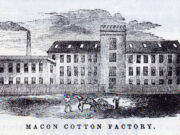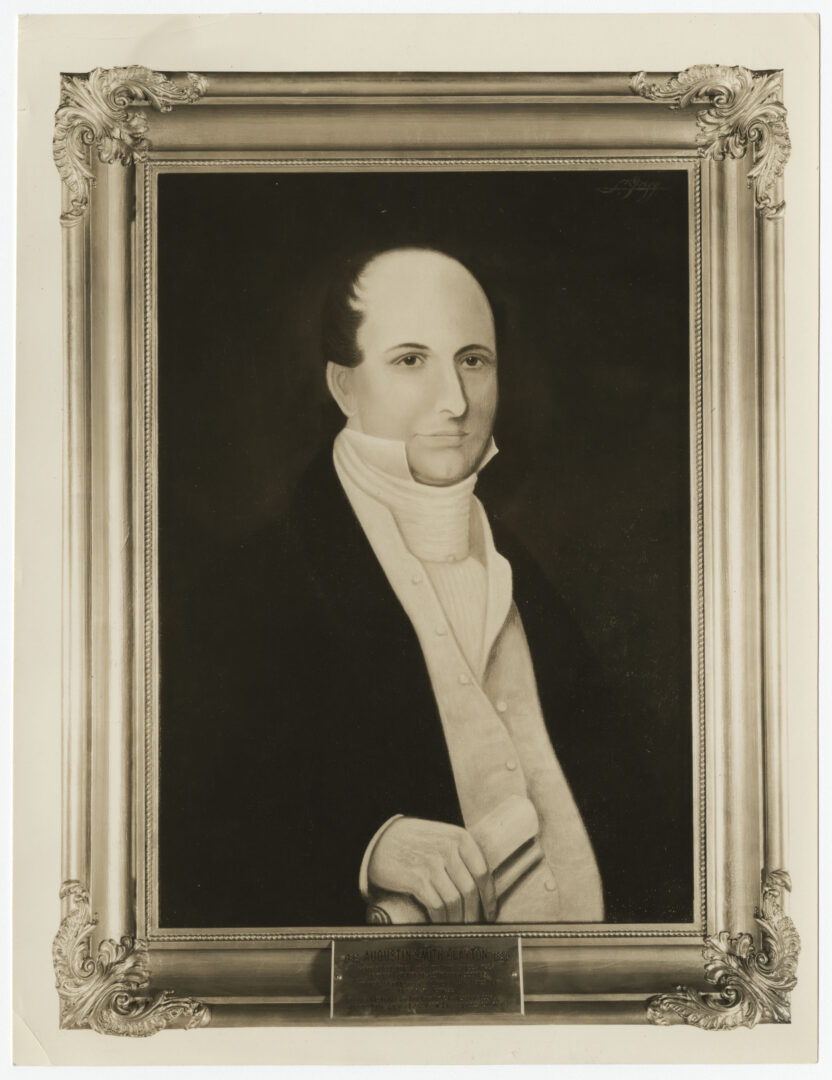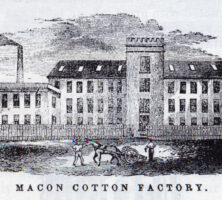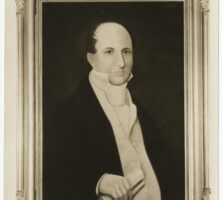The state of Georgia earned the nickname “The Empire State of the South” in the antebellum period largely because of its textile industry. From 1840 until 1890 the state consistently led the South in textile production, the leading manufacturing sector of the United States in the years before the Civil War. Georgia’s entrepreneurs began to experiment in factory-based industry between 1809 and 1820, but they failed in their first three attempts: the Bolton Factory in Wilkes County, Schley’s Factory in Jefferson County, and Jacob Gregg’s Factory in Morgan County. Although the details of these failures remain unclear, it may be that the sparse population in these counties near the Indian frontier proved too thin a market for profitable industrialization. Only after 1820 did Georgians push that frontier sufficiently west to develop the suitable waterpower factory sites along the fall line in Georgia.

At the end of the 1820s the nullification crisis, in which southerners opposed a protective tariff that subsidized northern industry at the expense of southerners, pushed Georgia’s entrepreneurs to industrialize textile production in earnest. Two of Georgia’s important political figures—Augustin Clayton of Athens and William Schley of Augusta —constructed cotton mills near their respective towns, hoping to prove the tariff unnecessary. By 1830 these two Georgia cotton factories operated nearly 5,000 spindles, and Clayton claimed that he doubled his money in only two years. Soon many other Georgians sought to make the same sort of profits, and by 1840 the state could boast fourteen cotton factories containing at least 16,635 spindles and involving a capitalization of more than $500,000. Georgia’s textile industry seemed capable of endless expansion, with large profits for all who invested. In 1844 the Athens Manufacturing Company declared a 24 percent dividend on its stock, and Henry Merrell, the factory manager at the newly constructed Curtwright Factory in Greene County, expected to make similar profits for the foreseeable future.

Courtesy of Hargrett Rare Book and Manuscript Library, University of Georgia Libraries.

Courtesy of Hargrett Rare Book and Manuscript Library, University of Georgia Libraries.
The very successes of Georgia’s industrialization set forces in motion that destroyed the reputation of its antebellum textile industry. Investors who were disappointed with the returns on their railroad stock during the long depression of the late 1830s to mid-1840s turned toward cotton factories. The state legislature encouraged additional factory construction in 1847 by making incorporation for a factory much easier than for any other company. Accordingly, the number of cotton and wool factories in Georgia grew from fourteen to thirty-five between 1844 and 1849. But the census counts frequently omitted factories that were temporarily inoperative or under construction, and the number continued to increase. In 1851 local newspapers noted at least forty-four cotton factories in the state, and by the mid-1850s a common estimate was fifty. The mill-building boom of 1846-53 contributed to an increase of at least 214 percent over the number of factories listed in the 1840 census.
During the boom Georgia’s entrepreneurs experimented in the size of their new factories and in the technologies they employed. Urban entrepreneurs—in Augusta by the early 1840s and in Columbus by the early 1850s—built large mills on commercially developed power canals. (These mills were modeled on those constructed by Francis Cabot Lowell, a wealthy Boston merchant, who developed the first large-scale, integrated, incorporated big business in America.) Neither proved profitable in Georgia in the antebellum years because of inadequate engineering. Other would-be industrialists anticipated similar construction but lacked the necessary financial backing. As late as 1856, when sectional rivalries seemed to point to imminent civil war, one group of Georgia entrepreneurs unsuccessfully sought to persuade Boston financiers to invest in a large mill complex in Newton County.
Most industrialists, however, adhered to the established pattern of building moderate-sized water-powered mills at the falls of a river or creek. A few of these rural mills operated slightly larger facilities; for example, the Sweetwater Factory in Campbell County developed into an industrial village of more than 1,000 people in 1860. Towns not as well endowed with waterpower, such as Milledgeville, Macon, Madison, and Greensboro, experimented with steam-powered cotton factories, with varying degrees of success. The steam-powered factories in Madison and Greensboro went broke in the 1850s, while those in Milledgeville and Macon survived to serve the Confederacy.
Unfortunately, the expectation for profits by Georgia’s industrial investors proved unrealistic. The return of agricultural prosperity increased labor and material costs for the factories and severely reduced their profitability. Also, so many of the new factories were producing the same range of coarse thread and cloth that prices soon fell. The textile industry was entering a period of increasing international competition, and improved rail transportation allowed northern manufacturers to compete more successfully with factories within the state. The combination of overproduction and stiffer competition eliminated profits for most of the factories.
By 1853 factory construction ground to a halt, and the ensuing shakeout of the industry eliminated many of the underfinanced or poorly conceived projects. As a result, the 1860 federal census enumerated only thirty-three factories in Georgia. The failed expectations of profits during the 1850s soured Georgia’s investors, large and small alike, on factories for years to come. However, although investment in textile mills ceased, investment pertaining to overall industrialization proved more resilient, and many capitalists diversified their industrial holdings. Some entered other manufacturing fields, such as papermaking. Some created financial services, like insurance companies, to stabilize the risks of industrial manufacture. Others created industries ancillary to ongoing textile industrialization, such as bobbin mills and foundries.
The thirty-year cycle of boom and bust in Georgia’s antebellum textile industry proved that the success of southern textile mills was inversely related to long-term trends in the price of cotton. When agriculture suffered, mill building flourished. When agricultural profits rose, Georgia’s textile industry floundered. Georgians rationally pursued profits in both agriculture and industry but were mindful of market forces and the history of risks in each area. Nonetheless, despite the setbacks of the late antebellum period, the industrial facilities and expertise developed by Georgians before the war contributed to the Confederacy’s logistical ability to fight a truly modern war for four years against the industrial behemoth of the North.










